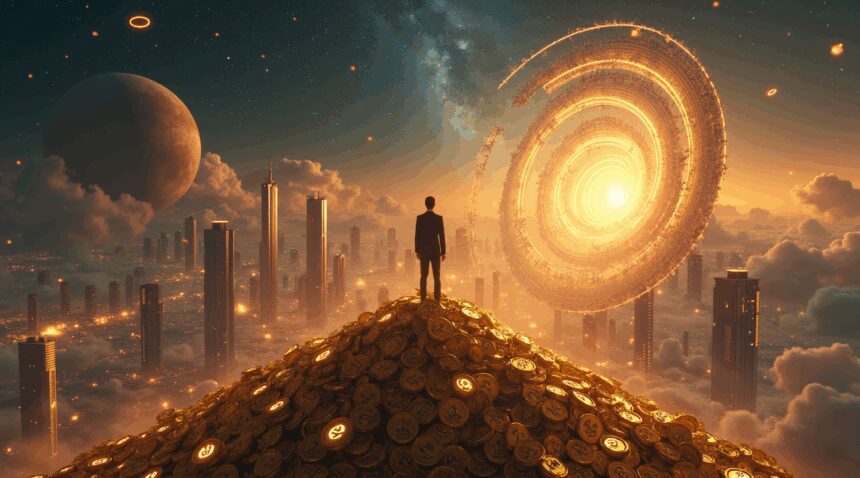No individual has ever achieved quadrillionaire status, and the mathematical realities of global economics make this level of wealth virtually impossible to attain. While global assets total approximately $1.2 quadrillion, the concentration of such vast wealth in a single person would require unprecedented economic transformation that exceeds current financial system capabilities.
Key Takeaways
- No verified quadrillionaire exists – Current global GDP of $105 trillion represents only one-tenth of what a quadrillionaire would possess, making such wealth accumulation impossible within existing economic frameworks.
- Current billionaires remain vastly distant – Even Elon Musk at $328.5 billion would need to multiply his wealth by over 3,000 times to reach quadrillionaire status, demonstrating the astronomical gap.
- Market and regulatory barriers prevent extreme concentration – Progressive taxation, competitive pressures, and government intervention create natural limits that prevent individual wealth from reaching quadrillion-dollar levels.
- Global asset limitations constrain possibility – While total global assets approach $1.2 quadrillion, much exists in illiquid forms like real estate and infrastructure that cannot be easily converted to personal wealth.
- Revolutionary economic changes would be required – Achieving quadrillionaire status would demand entirely new asset classes like successful asteroid mining or interplanetary colonization, technologies that remain decades away from commercial viability.
The World Has Never Seen a Real Quadrillionaire – And Probably Never Will
A quadrillionaire possesses a net worth of at least one quadrillion dollars ($1,000,000,000,000,000), which equals 1015 in currency units. I can tell you with absolute certainty that no human being has ever achieved this astronomical level of wealth. This figure represents a thousand times a trillion or a million times a billion—numbers so vast they stretch beyond practical comprehension.
The sheer impossibility becomes clear when comparing this theoretical wealth to actual global economic data. Current global GDP stands at approximately $105 trillion, which amounts to merely one-tenth of a quadrillion dollars. Even if someone could capture the entire world’s economic output for a decade, they’d still fall short of quadrillionaire status.
Why Quadrillionaire Status Remains Mathematically Impossible
Several factors demonstrate why quadrillionaire wealth can’t exist within today’s economic framework:
- Total global private wealth reaches only about $204 trillion
- The combined net worth of all billionaires worldwide equals just $16.1 trillion
- Individual wealth accumulation faces natural limits through market constraints
- Currency systems and inflation would collapse under such concentrated wealth
- Government intervention would occur long before such accumulation became possible
The gap between current wealth records and quadrillionaire status spans orders of magnitude. While Elon Musk and other ultra-wealthy individuals have reached hundreds of billions, they’d need to multiply their fortunes by thousands to approach quadrillionaire territory.
Modern financial systems simply can’t support such massive wealth concentration. Global equity markets operate within bounds that prevent individual accumulation at quadrillionaire levels. Market caps of entire industries rarely exceed hundreds of billions, making it impossible for any single person to capture enough value.
Even revolutionary technologies or blockchain innovations can’t generate the exponential returns needed for quadrillionaire status. The mathematics simply don’t work within Earth’s current economic capacity. While companies like Nvidia have achieved trillion-dollar valuations, individual ownership at these levels remains fractional.
The concept of quadrillionaire wealth surpasses the bounds of practical economics, making it more theoretical than achievable within any foreseeable timeline or economic structure.
How Today’s Richest Billionaires Compare to Quadrillionaire Status
The wealthiest individuals on Earth today possess fortunes that dwarf most people’s imagination, yet they remain strikingly distant from quadrillionaire status. I find it fascinating to examine just how vast this gap truly is when analyzing current wealth concentrations.
Current Billionaire Wealth vs. Quadrillionaire Benchmarks
Elon Musk, currently holding a net worth of $328.5 billion, would need to multiply his existing wealth by approximately 3,049 times to reach the $1 quadrillion mark. Jeff Bezos, with his $234 billion fortune, faces an even steeper climb, requiring a 4,274-fold increase in his current assets.
These calculations reveal the astronomical nature of quadrillionaire wealth. Even when I consider the most aggressive wealth accumulation scenarios, the mathematics remain staggering. The richest person alive today possesses less than 0.033% of what a quadrillionaire would hold.
Historical Wealth Giants Still Fall Short
Throughout history, certain individuals have amassed legendary fortunes that seemed impossible to surpass. Akbar the Great, the Mughal emperor, commanded wealth estimated around $21 trillion when adjusted for modern values. However, even this extraordinary sum represents only about 2.1% of quadrillionaire status.
The Rothschild family, often cited as one of the wealthiest dynasties in history with an estimated $400 billion in collective assets, would still need to increase their holdings by 2,500 times. I observe that even these historic examples of extreme wealth concentration pale in comparison to the quadrillionaire threshold.
Modern global equity markets and economic systems simply haven’t produced the conditions necessary for such massive individual wealth accumulation. The gap between today’s ultra-wealthy and quadrillionaire status illustrates how theoretical this level of personal fortune remains.
Consider that entire corporations valued at $2 trillion would need to be owned outright by a single individual, then multiplied by 500, to create one quadrillionaire. This comparison demonstrates why achieving such wealth would require fundamentally different economic conditions than those existing today.
The mathematical reality underscores that becoming a quadrillionaire isn’t simply about continuing current wealth accumulation trends—it would require unprecedented economic transformation or revolutionary value creation on a scale never witnessed in human history.
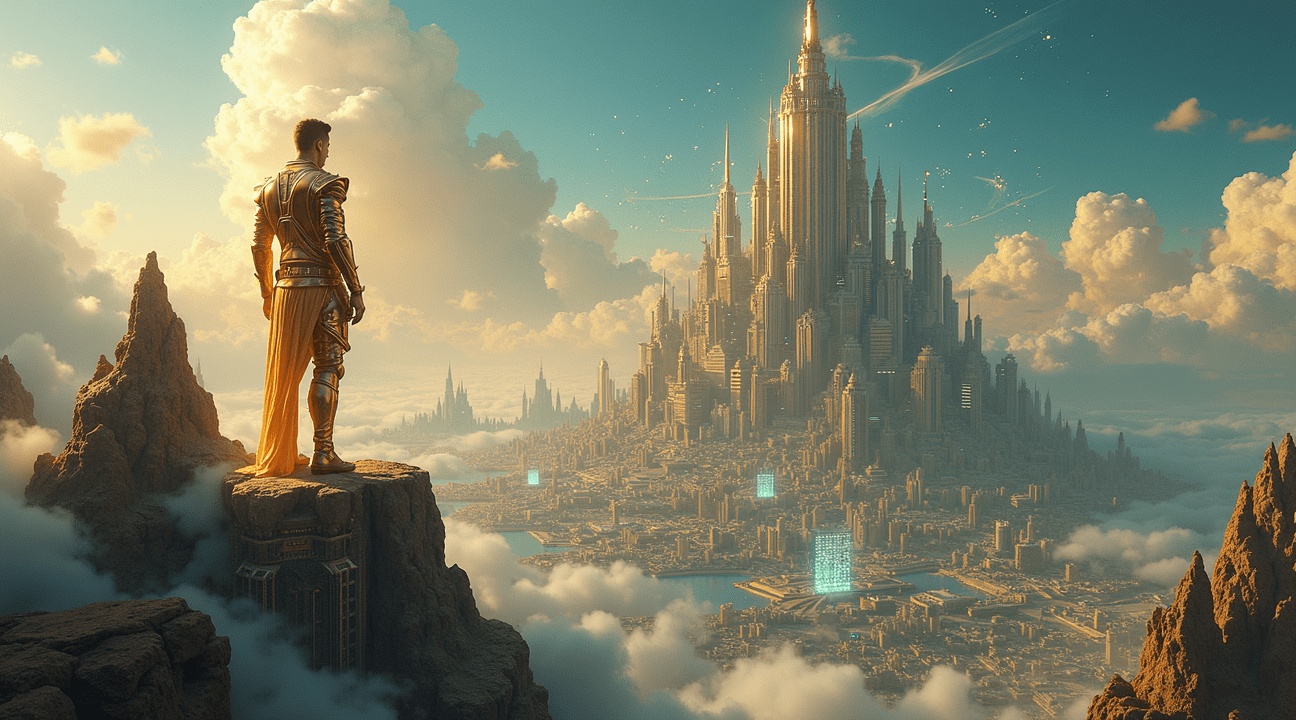
The Man Who Accidentally Became a Quadrillionaire for 24 Hours
Chris Reynolds never expected to wake up as the world’s first quadrillionaire, yet that’s exactly what happened in 2013 during one extraordinary day that defied every known measure of wealth accumulation. A routine check of his PayPal account revealed an astounding balance of $92,233,720,368,547,800 — a figure that dwarfed even the combined fortunes of today’s most successful entrepreneurs, including those who have made significant gains in the tech industry.
The astronomical sum represented more money than existed in the entire global economy. I find it fascinating that this accidental windfall exceeded the wealth of every billionaire businessman combined, creating a financial anomaly that lasted exactly 24 hours before PayPal’s systems corrected the glitch. Reynolds, a Pennsylvania resident, briefly held more theoretical wealth than entire nations produce in gross domestic product.
The Scale of Accidental Wealth
Understanding the magnitude of Reynolds’ temporary fortune requires perspective on just how incomprehensible quadrillions become in practical terms:
- The amount was roughly 1,400 times larger than the entire United States GDP
- It exceeded the combined market value of all publicly traded companies worldwide
- The figure represented more money than has ever existed in human history
- Even spending $1 million per day, it would take over 250 billion years to exhaust the sum
PayPal’s error demonstrated the theoretical nature of such massive numbers in digital systems. Reynolds couldn’t access or spend the money — it existed purely as data in an account display. Financial systems contain safeguards that prevent such errors from creating actual purchasing power, highlighting the difference between displayed wealth and accessible funds.
The incident revealed how modern financial technology can generate numbers that bear no relationship to real-world economic value. Reynolds handled the situation with remarkable grace, declining PayPal’s offer to donate money to charity on his behalf and simply asking for the error to be corrected.
This accidental quadrillionaire status lasted exactly one day, making Reynolds simultaneously the richest person who never was. His brief encounter with impossible wealth serves as a reminder that true quadrillionaire status remains beyond current human achievement, existing only in the digital errors of complex financial systems rather than actual accumulated value.
What Would It Actually Take to Reach Quadrillionaire Status
Achieving quadrillionaire status remains firmly in the territory of speculation and theoretical modeling. I find that any realistic pathway requires either unprecedented economic expansion or revolutionary changes to how we define and measure wealth itself.
Economic Transformation and Inflation Scenarios
Massive economic expansion represents one possible route, though it would require global economies to undergo exponential growth far beyond historical precedents. Significant inflation could theoretically push asset values to quadrillion-dollar levels, but this scenario would likely render such wealth meaningless in practical terms. The structural transformation needed would dwarf the economic shifts we’ve witnessed during major industrial revolutions.
Current economic modeling suggests that even the most optimistic projections fall short of creating the conditions necessary for quadrillionaire status within existing frameworks. Global equity markets would need to expand by orders of magnitude beyond their current trajectory.
Revolutionary Asset Classes and Technologies
The emergence of entirely new asset classes presents another theoretical pathway. Advanced artificial intelligence could create wealth through unprecedented automation and productivity gains, fundamentally reshaping how value gets created and distributed across global markets.
Asteroid mining represents perhaps the most compelling speculative opportunity. I observe that a single metallic asteroid could contain more precious metals than have been mined in human history. Space-based resource extraction could theoretically generate the scale of wealth needed to reach quadrillionaire status, though the technology remains decades away from commercial viability.
Interplanetary colonization offers another avenue worth considering. Major tech entrepreneurs have already begun investing heavily in space exploration and settlement technologies. The first successful Mars colony could create monopolistic advantages that translate into unprecedented wealth accumulation.
Future digital economies present additional possibilities through virtual worlds, digital assets, and blockchain technologies. I anticipate that entirely new economic systems could emerge within virtual environments, creating value that transcends traditional physical limitations.
However, all these scenarios remain firmly planted in science fiction territory. Current technology can’t support asteroid mining at commercial scales. Interplanetary colonization faces enormous technical and financial hurdles. Even the most advanced AI systems today fall far short of creating the economic disruption necessary for quadrillionaire wealth generation.
The mathematical reality proves sobering. Companies valued at two trillion dollars represent the current pinnacle of corporate wealth. Reaching quadrillionaire status would require multiplying that success by 500 times over, an achievement that stretches credibility under current economic conditions.
I also recognize that regulatory frameworks would likely evolve to prevent such extreme wealth concentration. Governments typically implement progressive taxation and antitrust measures when wealth disparity reaches concerning levels. Philanthropic commitments from current billionaires suggest that even today’s ultra-wealthy recognize the social responsibility that comes with extreme fortune.
Furthermore, practical considerations make quadrillionaire status nearly impossible to maintain. The logistics of managing such vast wealth would require unprecedented organizational capabilities. Market volatility could easily wipe out trillions in value overnight, making sustained quadrillionaire status extremely challenging.
The infrastructure needed to support quadrillionaire wealth doesn’t exist today. Financial institutions would need to develop entirely new frameworks for handling transactions of such magnitude. Even basic accounting and wealth management systems would require fundamental redesign.
I believe the most realistic assessment suggests that quadrillionaire status remains a theoretical curiosity rather than a practical possibility. While wealth accumulation strategies continue evolving, the scale required exceeds anything we can reasonably project based on current economic trends and technological capabilities.
The barriers aren’t just technological or economic—they’re also social and political. Society would likely implement safeguards long before any individual could accumulate such extreme wealth, ensuring that economic systems remain sustainable and equitable for broader populations.
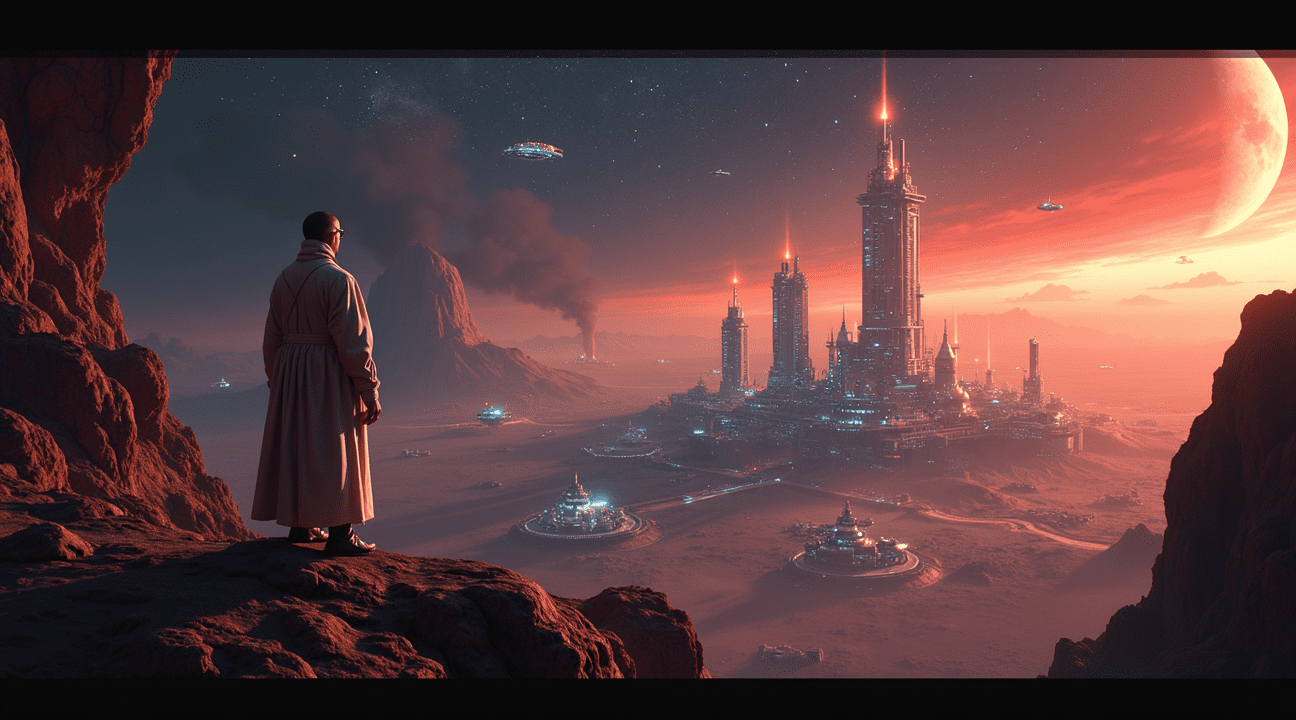
Why No One Will Likely Ever Become a Quadrillionaire
The mathematical possibility of reaching quadrillionaire status exists in theory, but practical barriers make this achievement virtually impossible for any individual. I examine several fundamental constraints that prevent such unprecedented wealth accumulation.
Market Forces and Economic Limitations
Market corrections represent the most immediate threat to extreme wealth concentration. Historical patterns show that massive fortunes often face periodic adjustments through economic cycles. Even the wealthiest individuals experience significant portfolio fluctuations during market downturns. These corrections prevent the sustained growth trajectory necessary to reach quadrillion-dollar valuations.
Progressive wealth taxes create another substantial barrier. Many countries implement increasing tax rates on higher wealth brackets, making it difficult to maintain exponential growth in personal assets. Global equity markets face regulatory pressures that limit individual wealth concentration through various mechanisms.
Competitive pressures in financial markets also prevent monopolistic wealth accumulation. As individuals or companies grow larger, they attract more competition and regulatory scrutiny. This dynamic distributes wealth across multiple players rather than allowing concentration in a single entity.
Global Asset Reality Check
Current estimates place total global assets at approximately $1.2 quadrillion, but this figure requires careful examination. Much of this value exists in non-liquid forms that can’t be easily converted to personal wealth. Real estate, infrastructure, and natural resources comprise significant portions of global value but remain largely illiquid for individual ownership.
Derivatives markets contribute substantially to the $1.2 quadrillion figure through double-counting mechanisms. These financial instruments represent claims on underlying assets rather than independent wealth, inflating the apparent total value. When accounting for this overlap, the actual pool of convertible wealth shrinks considerably.
The distribution of global assets across billions of individuals, corporations, and governments further limits concentration possibilities. Even if someone could theoretically access a significant portion of global wealth, economic systems have built-in mechanisms to prevent such extreme concentration.
Billionaire wealth patterns provide instructive examples of these limitations. Despite remarkable growth in some cases, even the wealthiest individuals face practical constraints on wealth expansion. Elon Musk and other billionaires demonstrate both the potential and limits of wealth accumulation through business ventures.
Financial strategies that work for building millions or billions face different challenges at extreme wealth levels. Currency stability, political risk, and international monetary policy all become factors that limit wealth concentration beyond certain thresholds.
Technology companies like Nvidia reach trillion-dollar valuations, but individual ownership of such companies faces dilution through public markets, employee compensation, and regulatory requirements. These mechanisms distribute value rather than concentrating it in single hands.
Philanthropic pressures also influence extreme wealth patterns. Many billionaires commit to giving away substantial portions of their fortunes, as seen in initiatives where wealthy individuals donate significant amounts regularly. This trend suggests cultural and personal motivations that work against maximum wealth accumulation.
The quadrillionaire concept remains mathematically possible but practically unfeasible given current economic structures. Market dynamics, regulatory frameworks, and the finite nature of global liquid wealth create multiple barriers to such extreme concentration. These factors ensure that quadrillionaire status stays in the realm of theoretical discussion rather than realistic financial planning.
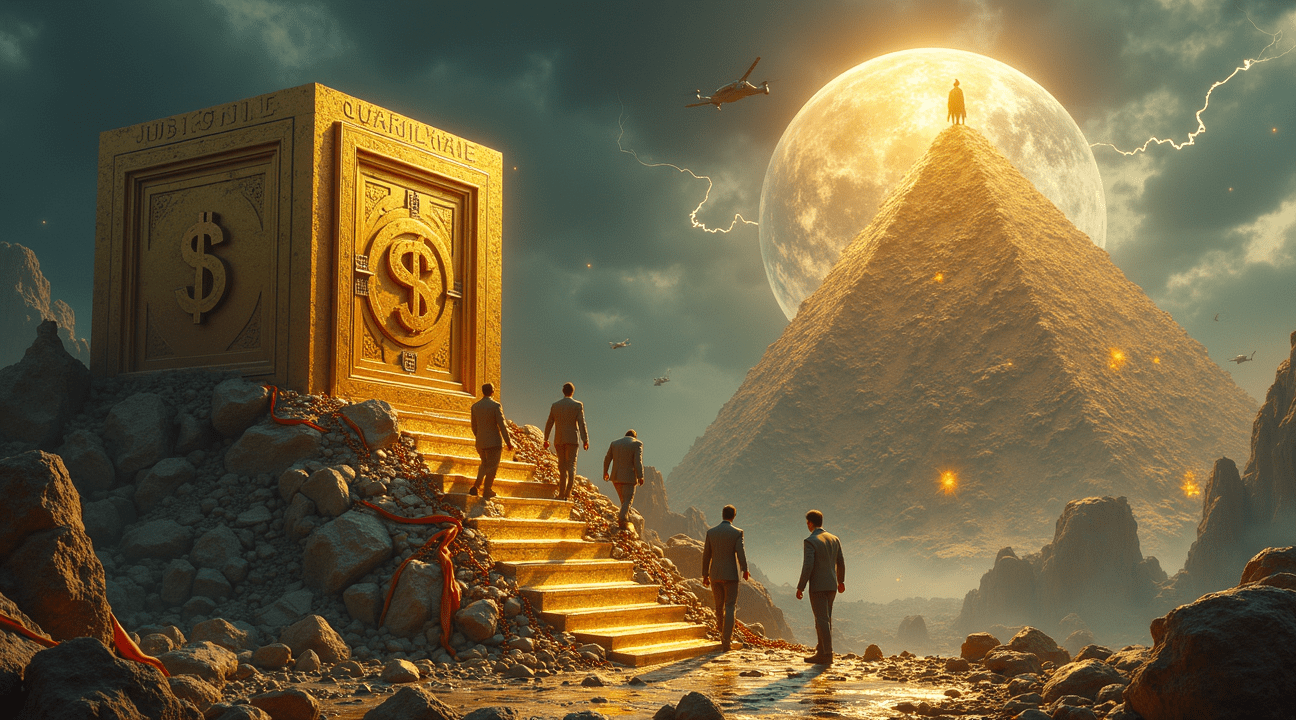
Understanding the Scale: Billionaire vs Trillionaire vs Quadrillionaire
The financial ladder from billions to quadrillions represents exponential leaps that challenge human comprehension. Each tier fundamentally transforms an individual’s economic influence on global markets and society.
The Billionaire Reality
Thousands of individuals currently hold billionaire status worldwide, with Elon Musk and Jeff Bezos leading the pack. Their $1 billion represents significant wealth, yet it pales compared to higher tiers. These business titans control vast empires spanning technology, retail, and space exploration. Companies like NVIDIA demonstrate how rapidly wealth can accumulate in today’s tech-driven economy.
Contemporary billionaires leverage diverse strategies to multiply their fortunes:
- Strategic investments in emerging technologies
- Building monopolistic market positions
- Creating scalable business models with global reach
- Capitalizing on equity market trends
The Theoretical Trillionaire Threshold
No verified trillionaire exists today, despite speculative projections about certain tech moguls. This $1 trillion benchmark requires a thousandfold increase from billionaire status—a mathematical reality that underscores the immense challenge. Historical wealth accumulation patterns suggest traditional business growth alone can’t bridge this gap within a single lifetime.
Modern financial systems present structural limitations for individual wealth concentration at trillion-dollar levels. Government regulations, market fluctuations, and economic cycles create natural barriers. Blockchain technology and cryptocurrency markets might offer new pathways, though volatility remains a significant factor.
The Quadrillionaire Concept
The quadrillionaire concept pushes financial theory into purely hypothetical territory. This $1,000,000,000,000,000 figure exceeds entire national economies and represents wealth beyond individual accumulation capacity. Such concentration would require revolutionary changes in global economic structures or unprecedented technological breakthroughs.
Wealthy individuals often employ strategic financial planning and charitable giving like those who donate millions weekly to optimize their wealth management. These practices demonstrate how extreme wealth requires sophisticated distribution strategies to maintain economic stability and social responsibility.
The journey from billions to theoretical quadrillions illustrates humanity’s relationship with extreme wealth concentration. Each thousandfold increase creates entirely different economic realities, moving from achievable business success to theoretical impossibilities that challenge fundamental economic principles.
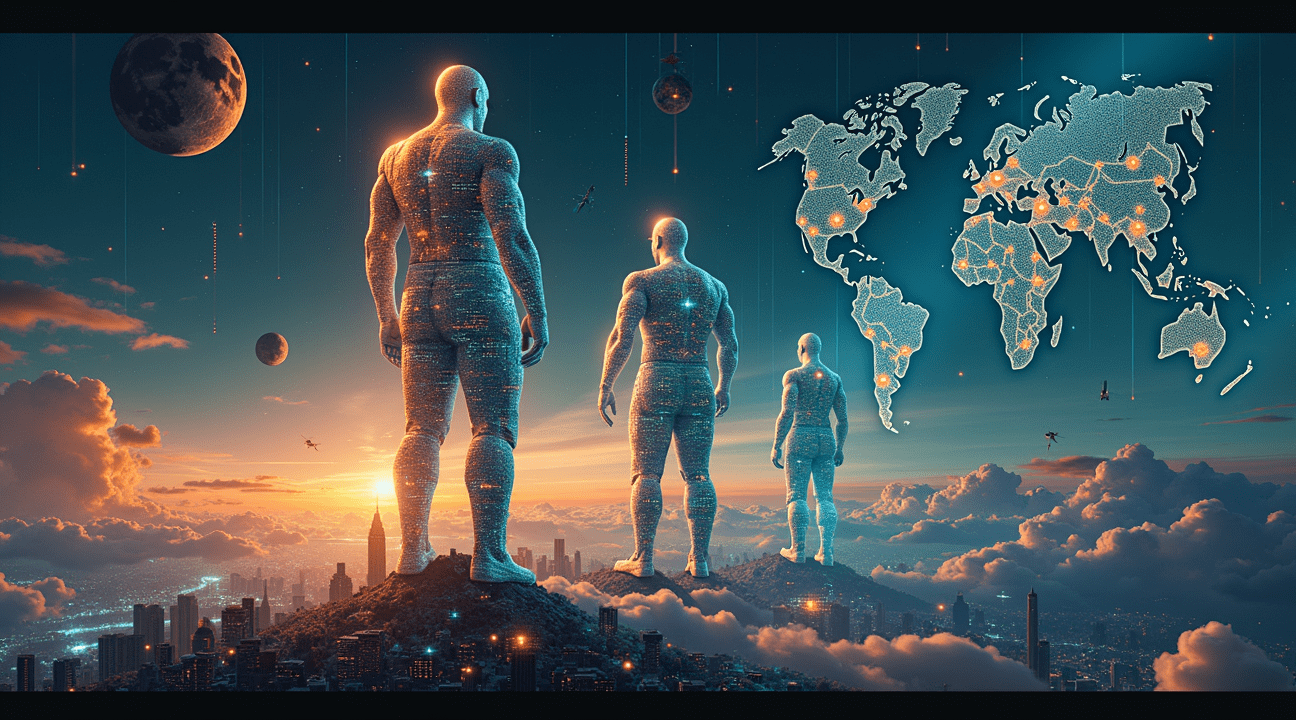
Sources:
OHEpic.com: “Why Billionaires Aren’t Trillionaires Or Quadrillionaires Yet”
Wiktionary: “quadrillionaire”
SupercarBlondie.com: “Remember when this man accidentally became a quadrillionaire”
Best-Citizenships.com: “How many Trillionaires are there?”
Corpocrat Magazine: “Extreme Wealth in Numbers”

